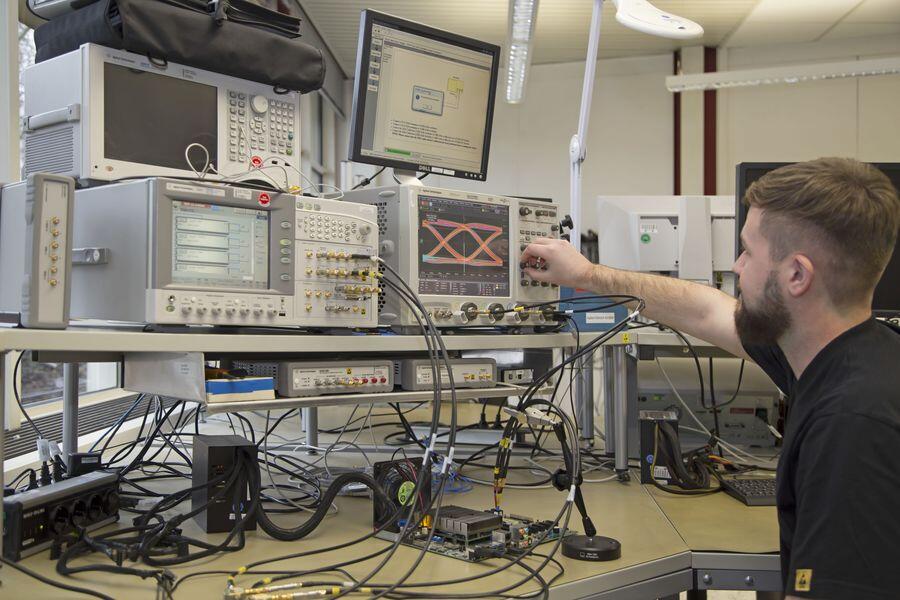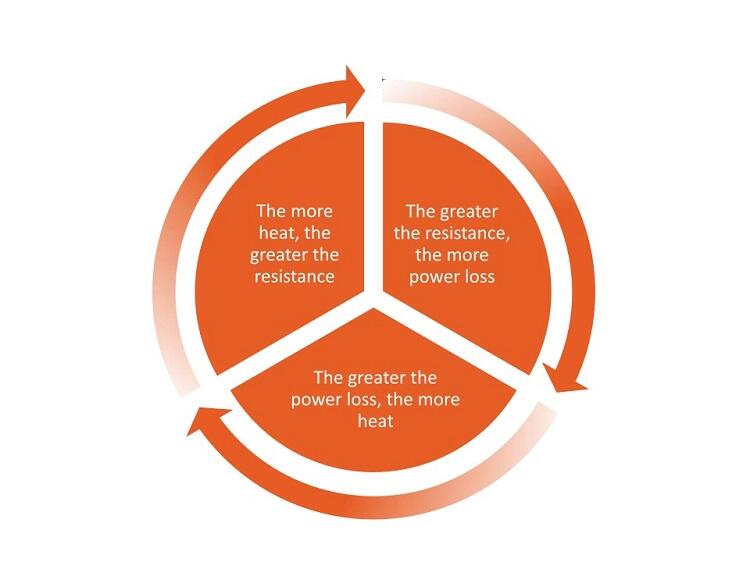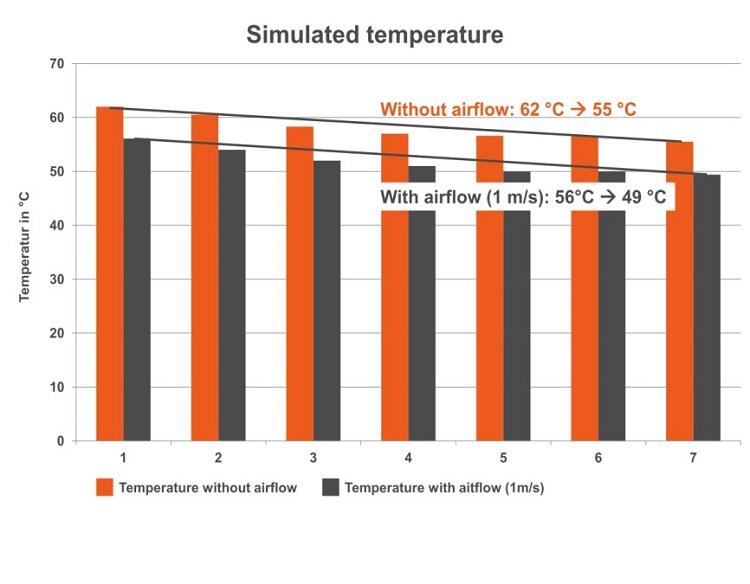Thermal stress and signal compliance
Article By : congatec

Embedded edge server designs with high-speed interfaces
With the implementation of high-speed interfaces such as USB 3.1, 10 GbE and PCIe Gen 3, thermal stress is becoming a growing concern of embedded designs as thermal and electrical properties interact. At congatec, all new embedded board, module and carrier board designs therefore undergo thermal and electrothermal simulations to ensure that the high-performance products are optimized in all aspects. As part of the comprehensive complementary service package offered by congatec’s Technical Solution Center, these simulations are also provided for OEM carrier board designs. The goal is to make the design-in of modules as easy as possible for OEMs.
To understand the challenges of today’s high-speed designs, a prototype design that was developed for new COM Express Type 7 Server-on-Modules with Intel Xeon D-1577 processors comes in useful. It has 16 cores and supports 2x 10 Gigabit Ethernet (KR) interfaces and 32x PCI Express Gen 3 lanes.
Hot case: Embedded edge server design
The new generation of high-performance COM Express Type7 Server on Modules currently mark the top end of the available embedded edge server performance. However, this performance class has brought physical causal chains to light that don’t have a material impact on the low-power products traditionally used in the classic embedded computing market. Signal failures were the first issue engineers encountered during their extensive design tests for a Server-on-Module – which can consume up to 100 watts if the design leverages with AMD EPYC processor, for example. Although proven RF measures, layout optimization for signal quality and design dimensioning had all been taken into account, the first prototype showed abnormalities in the compliance tests.
Certified compliance
However, the respective standardization committee can issue such a certificate only after the complete unit – consisting of COM Express module and matching carrier board – has undergone compliance testing. In real use, the carrier board is a customer and application-specific board. To enable customers to later successfully pass their own compliance tests, congatec exploits all technical possibilities. In the specially equipped in-house test laboratory, the functional unit of COM Express module with congatec reference carrier board is subjected to a pre-compliance test to prove its compliance capability. This transmit and receive pre-compliance test is part of the commitment required to meet the exceptionally high quality standards of a market leader. congatec also supports its customer’s compliance efforts for the application carrier board by providing expert knowledge, years of experience and laboratory services. This also protects customer applications against errors that could be caused by operating at the fringes of the specification.
Optimizing heat dissipation
As a manufacturer of the COM Express Type 7 Server-on-Module, congatec has no influence on the environmental conditions under which the board will later operate in the application. Unknown factors include the type of cooling – for example if a non-optimized heatsink is used or the course of the air flow in real use cases. Thus, congatec can base parameters only on the module itself. Here, the heat must be dissipated as quickly and evenly as possible to ensure optimal thermal operation. Efficient dissipation prevents critically overheated hot spots. Cooling considerations can no longer focus solely on the CPU in high-speed designs. Instead, all other semiconductor elements and, above all, the printed circuit board (PCB) also need to be taken into account. Here, it is important to remember that most heat-generating components sit on a copper pad. Their heat is dissipated to the large GND plane copper surfaces through vias.

Fig 1: While copper is the friend of cooling, it also has critical qualities: Copper changes its electrical properties when heated.
Thermal versus electrothermal simulation
There are two types of thermal simulation to account for these factors: The purely thermal simulation focuses exclusively on the power dissipation of components. It shows how much energy is converted into heat and how effective the cooling measures are. Electrothermal simulation also considers power distribution, especially in the power supplies. This is why the conga-B7XD COM Express board underwent detailed electrical and electrothermal simulations in addition to compliance and analysis tests. The following aspects were examined:
- How to improve the thermal connection of the components while at the same time decoupling the electrical connection;
- How to reduce the impact of fast switching slopes by optimizing parasitic inductances on the DC/DC converter;
- How to reduce the switching speeds without reducing circuit efficiency;
- How to optimize component heat dissipation in order to obtain additional component temperature reserves even with lower switching speeds.
By taking a holistic view of compliance testing and electrical, thermal and electrothermal simulation, it was possible to optimize the overall design of the new conga-B7XD COM Express board significantly.

Fig 2: In 7 simulation steps to success: By changing copper thickness as well as the number and placement of the VIAs, it was possible to lower the minimum and maximum temperature of the COM Express Type 7 design by approximately 12 percent.
Voilà – case resolved!
The error investigation team successfully solved the case, optimized the cooling and ultimately passed compliance. The result of the team’s work first and foremost consists in a fully compliant high-performance board. In addition, the thermally optimized design reduces customers’ cooling efforts, thereby saving costs because the application will be easier to cool.
Summary
Compliance ensures successful cooperation with other devices and guarantees best performance, bandwidth and interference immunity. It is mandatory. Compliance cannot be proven through functional testing. Only extensive simulations and tests in appropriately equipped test laboratories, as provided by congatec for OEM carrier boards, establish sound proof of compliance. As an additional benefit, compliance testing often reveals valuable hints how to further optimize the thermal and electrical dimensioning of OEM designs. Customers ultimately achieve a high safety margin in the compliance of their solutions, which can also reduce the cost and design effort for sizing their cooling solutions.
Subscribe to Newsletter
Test Qr code text s ss


